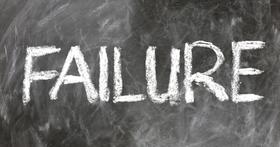Serving 64 students in grades 7-12, Alejandro Tapia Y Rivera Lajas ranks in the top 20% of all schools in Puerto Rico for overall test scores (math proficiency is top 5%, and reading proficiency is top 30%).
The percentage of students achieving proficiency in math is ≤10% (which is lower than the Puerto Rico state average of 23%). The percentage of students achieving proficiency in reading/language arts is 60-69% (which is higher than the Puerto Rico state average of 45%).
The student-teacher ratio of 8:1 is lower than the Puerto Rico state level of 10:1.
Quick Facts (2025-26)
- Grades: 7-12
- Enrollment: 64 students
- Student-Teacher Ratio: 8:1
- Math Proficiency: ≤10% (Btm 50% in PR)
- Reading Proficiency: 60-69%
- Source: National Center for Education Statistics (NCES), PR Dept. of Education
Top Rankings
Alejandro Tapia Y Rivera Lajas ranks among the top 20% of public schools in Puerto Rico for:
Category
Attribute
Community Size
Student Attention
School Overview
Alejandro Tapia Y Rivera Lajas's student population of 64 students has declined by 34% over five school years.
The teacher population of 8 teachers has declined by 20% over five school years.
Grades Offered
Grades 7-12
Total Students
64 students
Gender %
Total Classroom Teachers
8 teachers
Year Founded
1905
Last Day of School
Mon. May 25, 2026
Campus Size
50 acres
School Motto
Truth and Honor
School Mascot
Wild Boars
School Rankings
The diversity score of Alejandro Tapia Y Rivera Lajas is 0.00, which is less than the diversity score at state average of 0.01. The school's diversity has stayed relatively flat over five school years.
Math Test Scores (% Proficient)
≤10%
23%
Reading/Language Arts Test Scores (% Proficient)
(17-18)60-69%
45%
Student-Teacher Ratio
8:1
10:1
American Indian
n/a
n/a
Asian
n/a
n/a
Hispanic
100%
100%
Black
n/a
n/a
White
n/a
n/a
Hawaiian
n/a
n/a
Two or more races
n/a
n/a
All Ethnic Groups
Eligible for Free Lunch
84%
85%
Eligible for Reduced Lunch
6%
6%
School Statewide Testing
School District Name
Source: National Center for Education Statistics (NCES), PR Dept. of Education
School Notes
- School Mascot: Wild Boars
Profile last updated: 02/09/2025
Frequently Asked Questions
What percent of students have achieved state testing proficiency in math and reading?
≤10% of students have achieved math proficiency (compared to the 23% PR state average), while 60-69% of students have achieved reading proficiency (compared to the 45% PR state average).
How many students attend Alejandro Tapia Y Rivera Lajas?
64 students attend Alejandro Tapia Y Rivera Lajas.
What is the racial composition of the student body?
100% of Alejandro Tapia Y Rivera Lajas students are Hispanic.
What is the student-teacher ratio of Alejandro Tapia Y Rivera Lajas?
Alejandro Tapia Y Rivera Lajas has a student ration of 8:1, which is lower than the Puerto Rico state average of 10:1.
What grades does Alejandro Tapia Y Rivera Lajas offer ?
Alejandro Tapia Y Rivera Lajas offers enrollment in grades 7-12
What school district is Alejandro Tapia Y Rivera Lajas part of?
Alejandro Tapia Y Rivera Lajas is part of Puerto Rico Department Of Education School District.
School Reviews
Review Alejandro Tapia Y Rivera Lajas. Reviews should be a few sentences in length. Please include any comments on:
- Quality of academic programs, teachers, and facilities
- Availability of music, art, sports and other extracurricular activities
Recent Articles

Public School Open House & Enrollment Season Guide
A parent-focused guide to the public school open house and enrollment season, with expert questions, timelines, and decision tips.

School Supply Budget 2026: Fees, Books, Tech Costs
School Supply Budget 2026 guide for parents, covering fees, textbooks, technology, and hidden extras to plan ahead.

Education Funding in America (2025 Update)
Comprehensive 2025 update on public school funding in America, new federal and state policies, per-pupil spending, and equity challenges.





